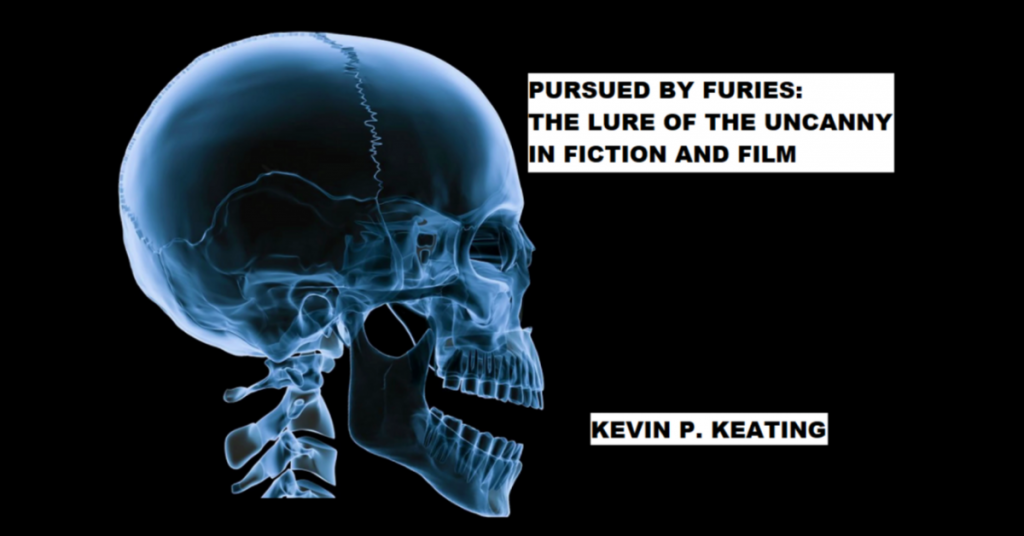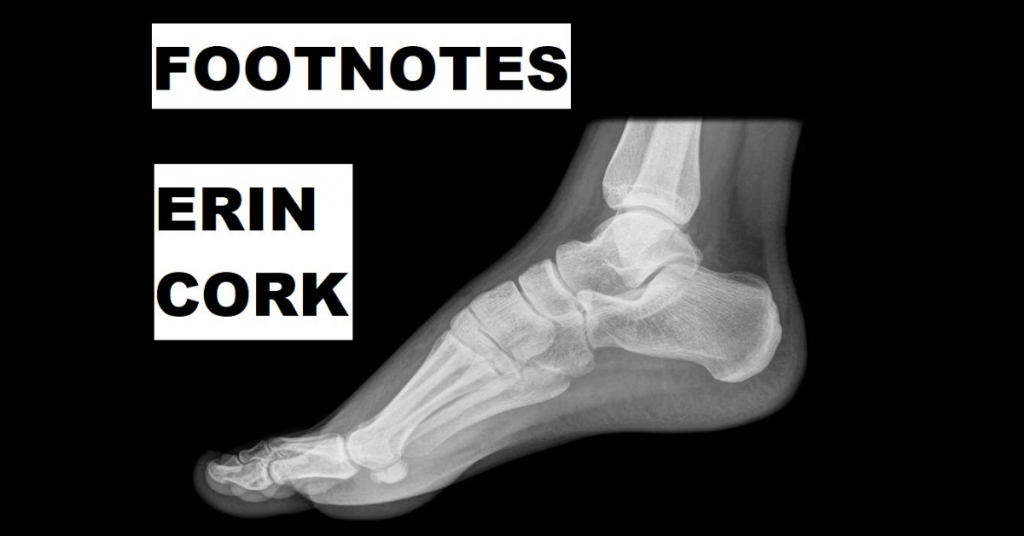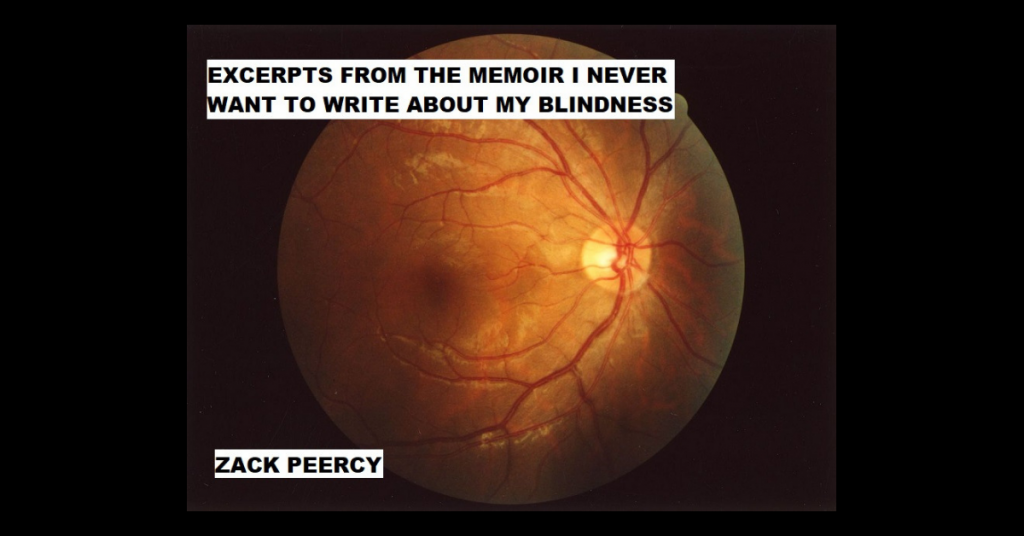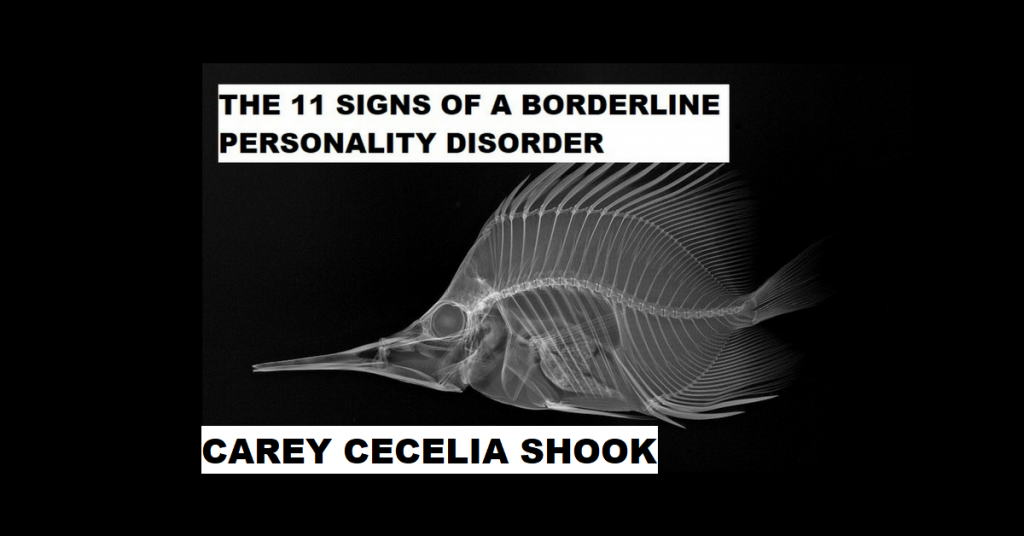
PURSUED BY FURIES: THE LURE OF THE UNCANNY IN FICTION AND FILM by Kevin P. Keating
Madeline and Sophie Ryan are identical twins. They are eight years old. They exude a rugged masculinity and are built like their merchant marine father — thick, solid, broad shouldered, with eyes so dark and glassy they seem to be made from perfectly polished pieces of obsidian. Mass murderers of spiders, flies, moths, and the exceptionally brilliant brush-footed butterflies that sail above the surface of the family swimming pool, the girls constantly hunt for easy prey. They’re also accomplished mimics who delight in doing impersonations of adults, aping their vocabulary with unnerving precision in a single singsong voice and then squealing with malicious, porcine laughter whenever their latest victim shoots them a weary and wounded look. They can be cruel to younger children but reserve the brunt of their wickedness for their long-suffering mother, relishing their roles as jailers and persecuting her in ways that only the most heartless of wardens can. Clever, calculating, supremely subversive, they understand intuitively that parenthood is a kind of indefinite prison sentence, one in which beleaguered moms and dads spend most of their days sequestered from other adults. To neighbors the girls look like a pair of wretched, half-starved urchins out of a folktale, feral creatures that search the nighttime streets for rancid scraps of food before seeking shelter in abandoned barns. They commit acts of petty vandalism. They may possess preternatural powers. They are darkly comic flourishes, or so I once believed, from my novel The Captive Condition (Pantheon 2015).
As I put the finishing touches on the book, I received feedback from several readers who said Madeline and Sophie reminded them of the eerie twin girls in Stanley Kubrick’s 1980 film The Shining. I was a bit mystified, perhaps even disappointed, by this comparison. I truly believed, at least to a certain extent, that the girls in The Captive Condition served as comic relief. Curious, I viewed the movie again for the first time in several years and became so intrigued not only by the iconic imagery of the hand-holding twins in their periwinkle puff sleeves and ruffle skirts but by Kubrick’s masterful storytelling technique that I decided to teach it in two of my college courses, Introduction to Folklore and Introduction to Mythology.
While performing the obligatory professorial research on the film, I learned that Kubrick, justifiably famous for his attention to detail, conducted his own survey of the horror genre and fell under the spell of “The Uncanny,” an essay by Sigmund Freud. The uncanny, claimed that cigar-chomping, glossarial jigsaw-solver of the human psyche, was the only feeling that was more powerfully experienced in art than in life. “If the horror genre required any justification,” Kubrick remarked, “this concept alone would serve as its credentials” (Kubrick: The Definitive Edition, Michel Ciment, Faber & Faber, 1999).
Toward the end of his brief essay, Freud posits that we experience the sensation of the uncanny whenever a storyteller denies us access to our reality-testing faculties. By this he means that most reasonable people, when faced with a spooky situation and tempted by their “primitive impulses” to attribute perfectly natural phenomenon to some supernatural power, can always rely on their critical thinking faculties to quell any lingering doubts and reveal the mundane truth. For example, we may be lying alone in bed on a stormy night and hear a door creaking open ever so slowly. Our “primitive minds” warn us that a ghost is approaching and yearns to slip under the sheets with us and whisper a bloodcurdling lullaby in our ears. But because we are rational beings who have easy access to those creature comforts provided by modern civilization, we can flip a light switch and quickly confirm that a cold draft has blown open the door and that the rusty hinges need oiling.
As Freud writes, “For the whole matter is one of testing reality, pure and simple, a question of the material reality of the phenomena.” The difficulty only arises when a storyteller keeps us in the proverbial dark for a prolonged period of time and doesn’t allow the trembling protagonist, and therefore the audience or reader, access to a conveniently located light switch. In order to create and sustain a sensation of the uncanny, the storyteller must keep us guessing about the true nature of the fictitious world he has created. Freud writes, “For the realm of phantasy depends for its very existence on the fact that its content is not submitted to the reality-testing faculty.” And according to Freud the critic, as opposed to Freud the psychoanalyst, readers and audiences may retain a feeling of dissatisfaction, “a kind of grudge against the attempted deceit,” if they see through the ruse and react to it as they would react to real experiences. In this case, the intellect serves as a metaphorical light switch and exposes the storyteller as an incompetent trickster.
In Freud’s view the stories most capable of creating a sense of the uncanny are those in which the storyteller “deceives us into thinking that he is giving us the sober truth, and then after all oversteps the bounds of possibility” by bringing about events that can never happen. In the completely fabricated and precisely structured worlds of “once upon a time” and “long ago and far away,” we accept the impossible as being perfectly ordinary. No one ever questions the validity of the tale of an innocent maiden who suddenly awakes from a poisoned-induced sleep and then runs off with a handsome and well-intentioned prince.
Similarly, in a body of literature that makes use of what Freud calls “poetic reality,” we may experience a sensation of gloominess, but because the nature of this world is still imaginary, though less imaginary than the faraway kingdoms in fairy tales, we do not experience the uncanny. Freud points to the tormented souls in both Dante’s Inferno and Homer’s The Odyssey, particularly the episode in which Odysseus makes the treacherous descent into the underworld to consult with the spirits of the dead, including the grief-stricken spirit of his own mother. In both of these epic poems, the moods are somber, the settings somewhat disquieting, but we cannot say they are uncanny.
For Freud the situation is dramatically altered when the storyteller “pretends to move into the world of common reality” [italics mine]. I believe this phrase, indeed this single word, is fundamental to our understanding of the uncanny. Through the slow and careful accumulation of minute details, the storyteller pretends to create a simulacrum of the world as we know and typically experience it, but from the very start he or she has something else in mind entirely. For example, at the beginning of The Shining, Stanley Kubrick gives his audience, and the doomed Torrence family—parents Jack and Wendy and their six-year old son Danny—a pleasant tour of the Overlook Hotel during a sunny afternoon in early autumn, making everything appear perfectly ordinary and familiar. Only after the hotel closes for the season and Kubrick turns his attention to the secret inner lives of his characters do uncanny feelings germinate.
One of the earliest and most memorable harbingers of the uncanny comes shortly after the Torrence family is left to care for the now vacant hotel during the long, brutal winter. Jack’s son Danny, while riding his Big Wheel through the labyrinthine hallways of the Overlook Hotel, sees the figures of the twin girls and listens to their unnerving refrain: “Come and play with us, Danny. Come and play with us. Forever—and ever—and ever.” It’s interesting to note that Kubrick’s twins, though peripheral to the plot of The Shining, continue to occupy a central place in the minds of most viewers, maybe because Danny cannot possibly explain the presence of these unfortunate girls who have been badly butchered by their demented father, the previous caretaker Delbert Grady. The indelible image of these girls, purportedly based on a photograph by Diane Arbus (though Kubrick adamantly denied this), serves as a warning to Danny about the very real dangers he will soon face.
Bruno Bettelheim, in his book The Uses of Enchantment: The Meaning and Importance of Fairy Tales, argues that these fantastic stories can serve a trouble child and help him overcome life’s travails. “Psychoanalysis,” writes Bettelheim, “was created to enable man to accept the problematic nature of life without being defeated by it, or giving into escapism. Freud’s prescription is that only by struggling courageously against what seems like overwhelming odds can man succeed in wringing meaning out of his existence. This is exactly the message that fairy tales get across to the child in manifold form: that a struggle against severe difficulties in life is unavoidable.” The trick, of course, is to “master all obstacles and emerge victorious.” A resourceful child, Danny Torrence memorably manages to elude the same grisly fate as the Grady girls by entering into a hedge maze while his deranged, dipsomaniacal father pursues him with an ax.
Throughout the film Kubrick uses mirror images as the primary means of unmasking, rather than concealing, repressed aspects of Jack Torrence’s persona. To establish this idea, Kubrick stages a scene early in the film. While eating breakfast in bed in front of a mirror, Jack reveals to his wife that he feels oddly at home at the Overlook. “It was as though I had been here before,” he tells her. “I mean, we all have moments of déjà vu, but this was ridiculous. It was almost as though I knew what was going to be around every corner.”
Soon he begins to see ghosts in the hotel, and in every scene in which he confronts one of these spectral figures — the bartender in the gold ballroom, the deceptively beautiful woman in the green bathroom, the racist caretaker in the red bathroom — Jack is standing in front of a mirror. To fully grasp the significance of these ghosts, and all of the subsequent horrors the Torrance family must face, one must understand certain hidden realities. “The uncanny,” Freud states, “is something that is secretly familiar but has undergone repression and then returned from it.” It’s easy to see that the ghosts in the film are manifestations of past traumas, which are secretly familiar but which Kubrick renders as "uncanny figures" after they have "returned from repression.” For example, Jack Torrence's repressed alcoholism becomes the bartender, an uncanny figure who shouldn't exist but who manifests a "secretly familiar" repression. Similarly, Jack’s uninhibited lust manifests itself as the naked woman in the bathtub of Room 237.
Unable to face the terrible truth of his moral weaknesses, Jack begins to identify with these apparitions until he is in doubt about his own identity. Freud writes, “The subject identifies himself with someone else, so that he is in doubt as to which self is his, or substitutes the extraneous self for his own.” In other words, there is a doubling, dividing and interchanging of the self, and thus we have characters who are to be considered identical because they may look or behave alike. There is also the constant recurrence of the same thing — the repetition of the same features, character-traits, vicissitudes, and — most importantly for The Shining — the same crimes. Freud explains, “These themes are all concerned with the phenomenon of the double, which appears in every shape and in every degree of development.”
By referring to Freud's work, Kubrick seems to be making a larger metaphorical point: that the spectral images he presents to viewers are not supernatural or mysterious in origin, but rather, completely familiar. Freud cautions us that humanity’s horrors aren't something to be explained away with mysticism, ghosts, or magic, but to be fought off with logic and intelligence; nevertheless, we interpret the disturbing images in The Shining as bizarre, horrific and odd simply because Kubrick denies his characters — and therefore his audience — access to reality. His characters, because they are unable, or perhaps unwilling, to confront the troubling nature of their past experiences, fall victim to their own unconscious minds, which transform these buried memories into a series of warped and nightmarish images.
According to Freud it’s all a matter of intellectual uncertainty. Are we supposed to be looking at the products of a madman's imagination, “behind which we, with the superiority of rational minds, are able to detect the sober truth?” This is a distinct possibility, and yet our critical thinking faculties are incapable of explaining away our sensation of the uncanny. Storytellers like Kubrick know this perfectly well and attempt to manipulate our emotions by exploiting our uncertainty. We cannot be entirely sure whether the ghosts in the Overlook Hotel are products of Jack’s imagination or real apparitions. Our rational minds are searching for an explanation, but uncanniness is derived from the storyteller’s ability to make us doubt any rational explanations we might devise. The most successful stories deliver a raw, emotional experience, and in order to accomplish this goal, Kubrick used every tool at his disposal.
“Primitive man,” Freud argues, “ascribes meaning to numbers, objects or events which are repeated.” He theorized that we equate things like repetition and patterns with “destiny” and “mysticism,” and Kubrick bathes his film in a semiotic language of repetition, hidden numbers, symbols and patterns, knowing that these images will likely lead to uncanny feelings when discovered. The audience is left confused and enticed by these mysteries and then attempts to bring them to light by creating meaning. Nowhere is this seen more clearly than in the imagery of “the double.”
But why is such a technique so universal to storytelling? One possibility, according to Freud, is that doubling is “a preservation against extinction.” He hypothesizes that the desire to transcend death led people in ancient civilizations to develop the art of making images of the dead in lasting materials, for example an Egyptian sarcophagus, so they could live forever and ever. Such ideas, however, have sprung from the primary narcissism which dominates the mind of the child and of primitive man. For modern people, the “double” reverses its aspect; from having been an assurance of immortality, it has now become an uncanny harbinger of death.
This ultimately futile desire to make, or perhaps remake, the image of the dead in lasting materials is presented quite explicitly, and with tragic consequences, in the final shot of The Shining where doubling is used to extraordinary and almost vertiginous effect. As the film draws to an end, Jack Torrence undergoes a startling transformation of character until he seems to be composed of several different personalities and finally becomes a permanent part of the “haunted” hotel, memorialized in the unnerving 1921 photograph. The film’s self-referential ending highlights the ambiguity, or rather, deliberately confuses the distinction between reality and imagination. An uncanny effect can often be seen when reality (a caretaker in the present day) interacts with our imagination (the caretaker’s likeness in an old photograph). Freud says this is precisely the moment when our “infantile and neurotic elements” start believing in magical practices. We focus on mental realities and ignore the material reality.
Despite The Shining’s bleak ending, Kubrick does allow Danny Torrence to escape from the hedge maze and reunite with his mother. As Bruno Bettelheim writes, “It is not that the evildoer is punished at the story’s end which makes immersing oneself in fairy stories an experience in moral education. In fairy tales, as in life, punishment or fear of it is only a limited deterrent to crime. The conviction that crime does not pay is a much more effective deterrent and that is why the bad person always loses out.” Bettelheim continues, “Morality is not the issue in these tales, but rather, assurance that one can succeed. Whether one meets life with a belief in the possibility of mastering its difficulties or with the expectation of defeat is also a very important existential problem.”
Many commentators have noted that the true hero, when faced with an existential crisis, can only escape a terrible fate by coming to the realization that “the self” is an illusion created for the benefit of other people. We all craft stories about ourselves, stories that are partially true and partially false. In time they become semblances of an identity, but it is crucial that we recognize these stories as the different masks we wear in order to present—or to disguise—our true selves. The problem is just this: many of us are unable to identify with any degree of certainty a single persona that seems entirely authentic. Who are we when in the presence of our friends? Who are we with our parents? Our children? Our employers and colleagues? Who are we when we are alone? The more we think about this, the more likely we will find that there is no “I” at the center of our consciousness. The ego is a culturally conditioned fiction and in storytelling is often associated with the monster—a deceptive, selfish and self-seeking creature that spreads fear and destruction.
One solution to this conundrum is to become egoless or selfless or, as Odysseus becomes in the episode with the Cyclops, to become Nobody. To be Nobody is not to enter some fantastic condition of egolessness. Rather, it is simply one’s willingness and ability, when the time comes, to drop the self, to let Somebody go and surrender to circumstances. As a reprieve from the cultural demands of egoism, it is important that we slip into a condition of anonymity from time to time. We always worry about what other people expect and want from us. Dropping the illusion of the ego can help us overcome these everyday concerns. Accepting that we are “nobody” can be a difficult and even frightening realization, but relying on pride and ego more often than not leads, at the very least, to profound disappointment.
In The Shining Jack Torrence is an ineffectual husband, father, writer, caretaker, and former school teacher. Perhaps by becoming Nobody he can escape from these culturally conditioned and predictable roles. The problem, of course, is that Jack is deceiving himself more than anyone else in his life. Consumed by different aspects of his own repressed and twisted ego, he rapidly descends into madness, and this, I think, is the final point that needs to be made about the film.
Just as he uses ghosts to reveal disturbing aspects of Jack’s personality, Kubrick uses Jack to reveal something rather disquieting about human nature in general—namely, that the ego can be characterized by one basic rule: it always wants something. Thus, for the person driven by ego, life is characterized by chronic desire and chronic frustration. We are frustrated because so often in life we don’t get what we so desperately want. Jack wants to become a successful writer. He wants to have a drink and even says, “I’d give my fucking soul for a glass of beer.” He aches to posses the beautiful women in the bathtub. He wants to escape from his wife and child. Since these paths are not open to him, he naturally begins to repress his desires until they gradually transform into terrifying phantasms.
Looking back on my own work, I can now see how Madeline and Sophie Ryan serve a similar function in The Captive Condition. The adult characters in my novel, fearful of serious introspection and therefore lacking in any kind of meaningful self-awareness, have a tendency to perceive the twins as devious little fiends and, later, as a couple of cajoling ghosts, mainly because the girls have an uncanny talent for revealing the moral shortcomings and the secret, forbidden desires of adults. At certain moments in our lives, our emotions can become asphyxiating clouds of uncertainty, and in a passage near the end of the book, I briefly make use of mirror imagery to acknowledge that, for many of us, determining the difference between what is real and what is imaginary can be difficult:
Some people, when they pass away, leave behind fond memories and wonderful legacies of love, but many more leave long trails of misery and despair, and when the bereaved claim to sense a presence floating along dark hallways or glimpse hooded figures rising up in shattered mirrors or witness fantastic apparitions advancing and receding above bogs and fens and festering swimming pools, they likely are perceiving the enduring gravamen of the dearly departed, a disappointment so profound that it somehow transcends death. So who could say for sure if the spectral figures that…floated above the streets of town were in fact ghosts or illusions conjured up by the drunk and disorderly revelers making their way home on New Year’s Eve. Madeline and Sophie wondered the same thing themselves: was this how ghosts were supposed to feel?
There can be no definitive answer to a question of this kind. We are now in the realm of the fantastic. The passage is meant to reveal more about the reader than the characters enacting the drama, but of course the whole art of the drama is to put into words and images those experiences people know are secretly true but haven’t yet noticed or are themselves unable to express. In this sense storytelling becomes a kind of meditation on the self. As Bruno Bettelheim puts it, “Stories also warn that those who are too timorous and narrow-minded to risk themselves in finding themselves must settle down to a humdrum existence—if an even worse fate does not befall them.”
Only those who rid themselves of superstitious beliefs can see through the uncanny. Such individuals can shrug off deceptive sights, signs and repetitions, and perceive the underlying truth. In contrast, those who cling to the ways of our primitive forefathers are doomed to believe in the supernatural. Freud states that our ancestors’ fondness for mythology and fables is largely what causes our belief in ghosts, apparitions, and monsters. Thus, our current irrational beliefs are largely due to the irrationalities of our ancestors. They’ve been passed down from one generation to the next, much as generational violence has been passed down in Kubrick’s film. Jack Torrence, who clings to the ways of his predecessor Delbert Grady, reenacts the same heinous crimes simply because he conjures up ghosts of the past, which he uses to affirm his own existence. Freud cautions, “Unless a man is utterly hardened against the lure of superstition, he will be tempted to ascribe a secret meaning to these phenomena.”



